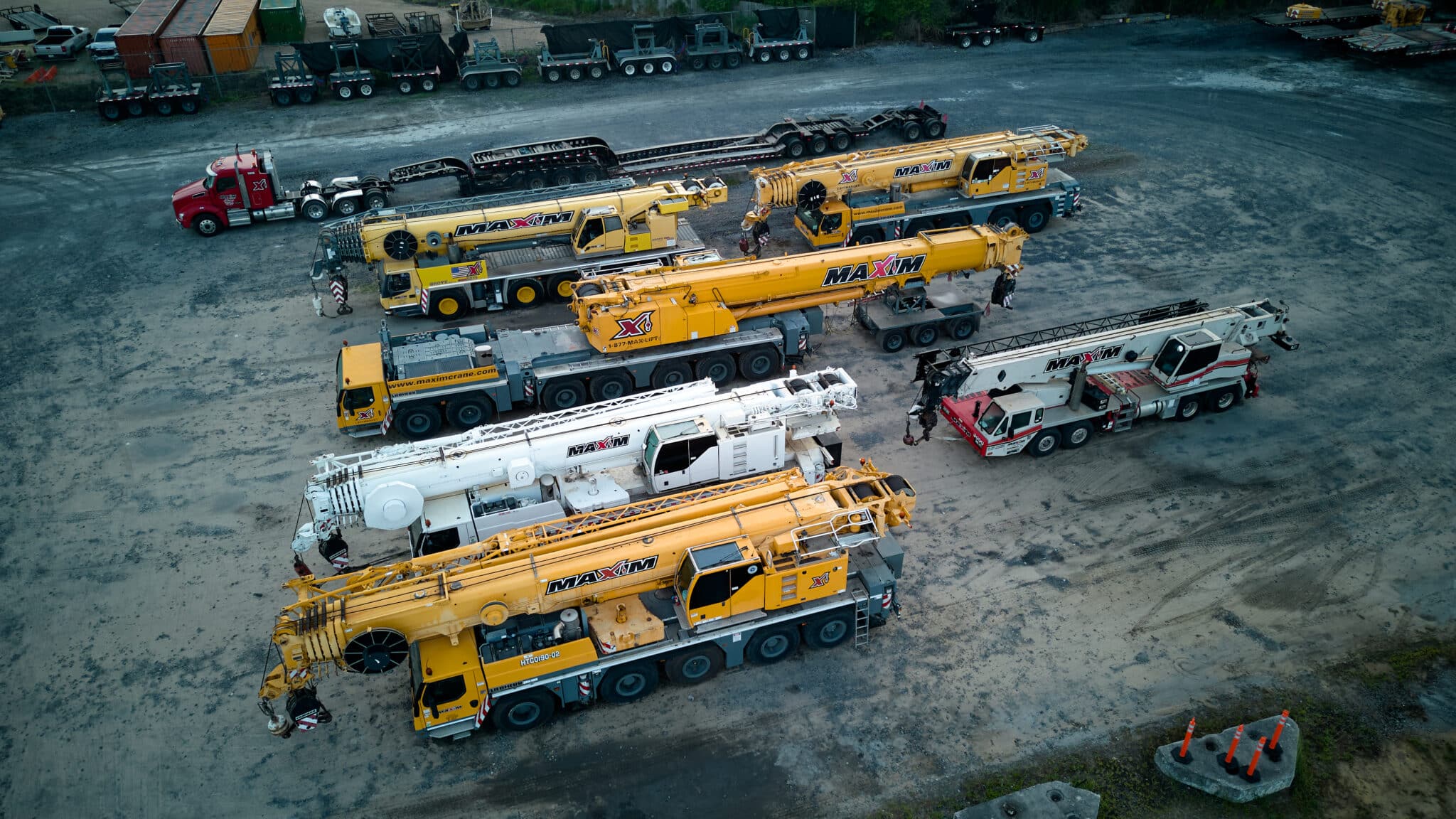Selecting the right crane is a pivotal decision in the success of any construction project. Cranes are the workhorses of the industry, integral for lifting and moving heavy materials, and their importance cannot be overstated. With a vast array of crane types available, each with its own specific uses and strengths, understanding which crane is best suited for your project can dramatically influence efficiency, cost, and safety.
The importance of this choice extends beyond the immediate lifting needs—it affects project timelines, budgets, and even the logistics of moving equipment.
In this blog post, we will navigate the complexities of crane selection, offering insights into the various types of cranes like tower cranes for high-rises and crawler cranes for challenging terrains, and the conditions they are best suited for.
Understanding the Role of Cranes in Construction Projects
Cranes are indispensable in the realm of construction, providing the muscle needed for lifting and hauling heavy materials. Their ability to move large items with precision is critical for the efficiency and progress of any building project. With a variety of crane types available, each one is designed to cater to specific project needs, ensuring the right fit for various construction scenarios.
The versatility of cranes extends to their adaptability in a multitude of environments, from urban landscapes to remote industrial sites. Whether it’s a towering skyscraper or a sprawling infrastructure development, the presence of a crane is a sign of upward movement and structural evolution. Selecting the optimal crane is not just about having the right tool for the job; it’s about harnessing the power to elevate materials and aspirations alike.
Types of Cranes and Their Applications
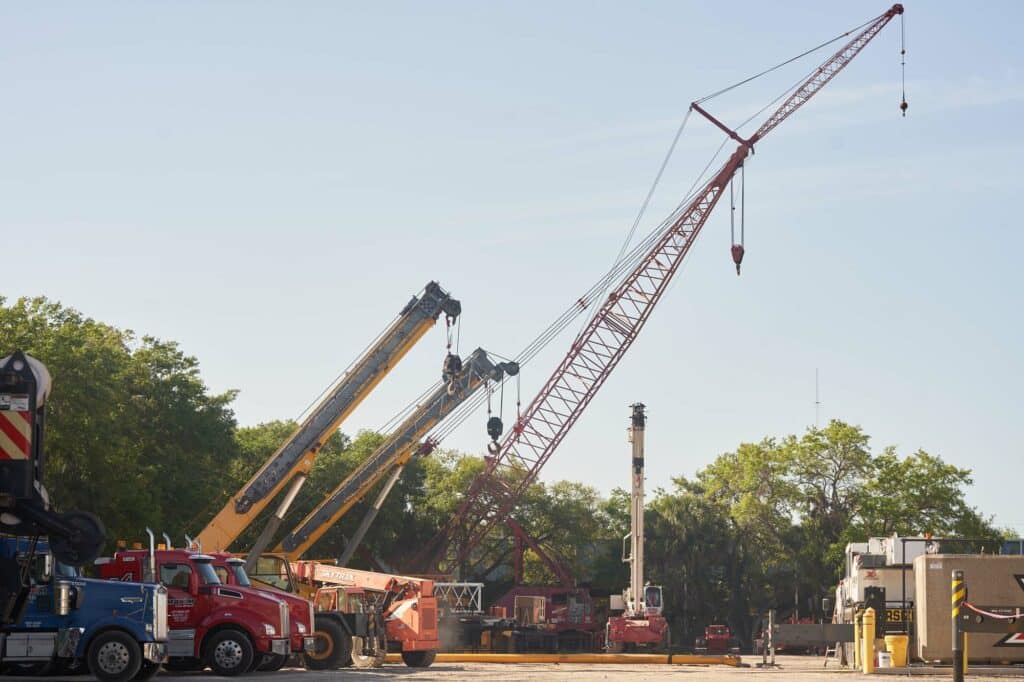
Cranes are indispensable tools on construction sites, each type designed with distinct advantages for various applications. With a deep understanding of the different types of cranes and their capabilities, project managers can select the optimal crane for their specific needs, facilitating a smooth and efficient workflow. The following are the most common types of cranes used in construction projects:
Tower Cranes
Tower cranes have become a symbol of urban construction, especially suited for high-rise projects due to their ability to climb the structure as it ascends, making them an ideal choice for tall building construction. These cranes are engineered to self-erect, adding sections as needed, and are capable of dismantling themselves upon project completion, providing a high degree of flexibility and efficiency on the job site.
Rough Terrain Cranes
Rough terrain cranes are built to navigate and operate on difficult terrain, making them essential for remote job sites. These heavy lifters are known for their ability to work effectively in areas where standard cranes may struggle due to the challenging ground conditions. With their rugged design and powerful capabilities, rough terrain cranes are well-suited for a variety of applications, including construction projects in mountainous regions, oil and gas industry operations in remote areas, and infrastructure development in difficult terrain. Their versatility and adaptability make them a valuable asset in the construction and engineering industries.
Crawler Cranes
Crawler cranes are highly specialized machines designed to perform heavy lifting tasks in challenging terrains. Their track-based movement system provides exceptional stability and allows them to navigate through soft grounds with ease. These cranes have a remarkable lifting capacity, making them suitable for transporting heavy loads across construction sites. Their durable construction and superior stability make them a preferred choice for lifting heavy objects over long periods of time, especially in large-scale construction projects.
All Terrain Cranes
All terrain cranes blend mobility and heavy lifting capabilities, commonly found on commercial and industrial sites for short-term and long-term jobs. They are designed for a variety of terrains and feature multiple axles, providing enhanced stability for heavy lifting operations. They can be transported to the site and quickly put to work, making them a popular choice for projects with diverse lifting needs.
Boom Trucks
Boom trucks are a specialized vehicle used primarily in construction and utility industries. It typically consists of a flatbed truck with a hydraulic crane or boom mounted on it. The boom is used to lift and move heavy objects or materials to elevated locations, such as rooftops or upper floors of buildings. Boom trucks are versatile and can be equipped with different types of booms, such as telescopic booms or articulating booms, depending on the specific application and requirements. They are commonly used for tasks such as lifting and installing materials like steel beams, HVAC units, or electrical transformers.
Hydraulic Truck Cranes
Hydraulic truck cranes are highly regarded for their versatility and agility, making them a top choice for a wide range of lifting applications in short-term construction projects. Their compact design and truck-based chassis allow for quick set-up and easy maneuverability, making them an ideal solution for lifting, loading, and unloading various materials and equipment. With their mobility and efficient operation, hydraulic truck cranes provide a reliable and effective lifting solution for diverse projects with varying requirements.
Carry Decks
Carry decks are highly adaptable cranes that excel in both indoor and outdoor settings. Equipped with the capacity to navigate tight areas and hoist heavy loads, they are well-suited for industrial and construction environments where space is at a premium. Their agility and ease of operation make them an ideal choice for refineries, manufacturing plants, and warehouses.
Each type of crane offers unique capabilities and advantages, catering to specific project requirements. Understanding the distinct features and applications of these crane types is essential for making informed decisions in selecting the right crane for a project. By considering factors such as lifting capacity, mobility, and terrain conditions, project managers can maximize efficiency and safety while minimizing costs and downtime.
In the next section, we will delve into the key considerations for selecting the right crane, including factors such as project scope, material weight, reach, height, and site conditions. This comprehensive approach will provide a roadmap for effectively matching the specific needs of a construction project with the appropriate crane type, ensuring optimal performance and productivity.
Factors to Consider When Selecting a Crane
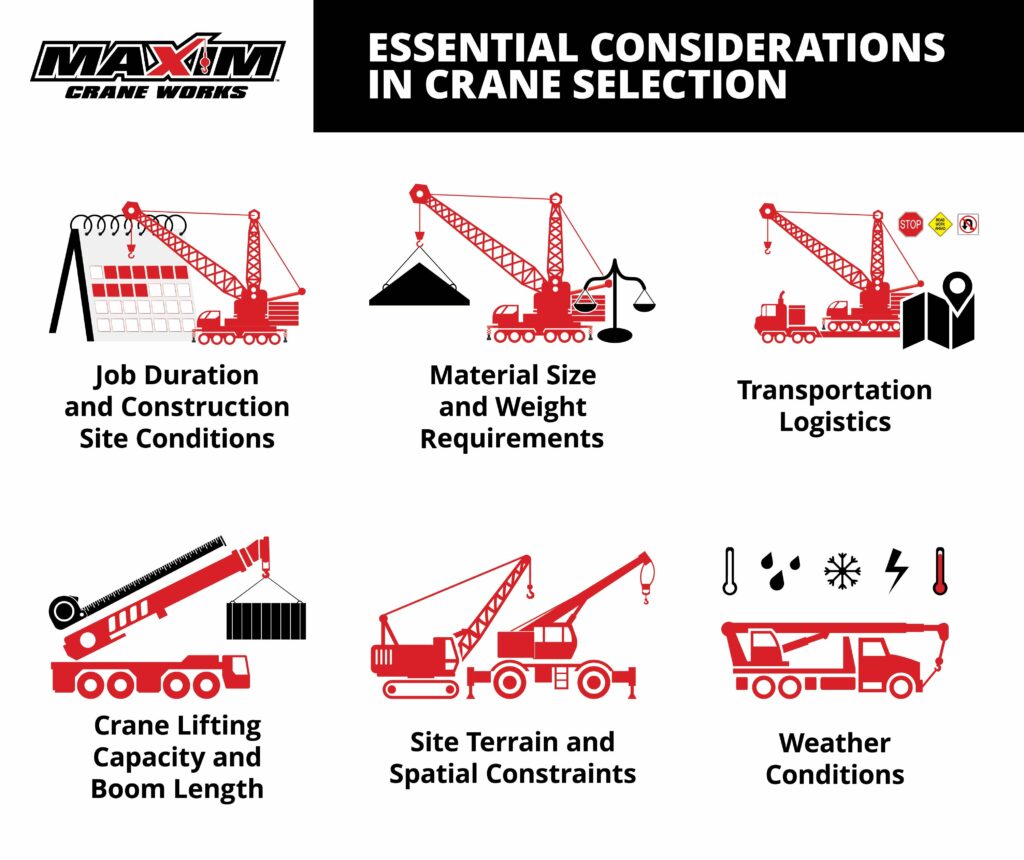
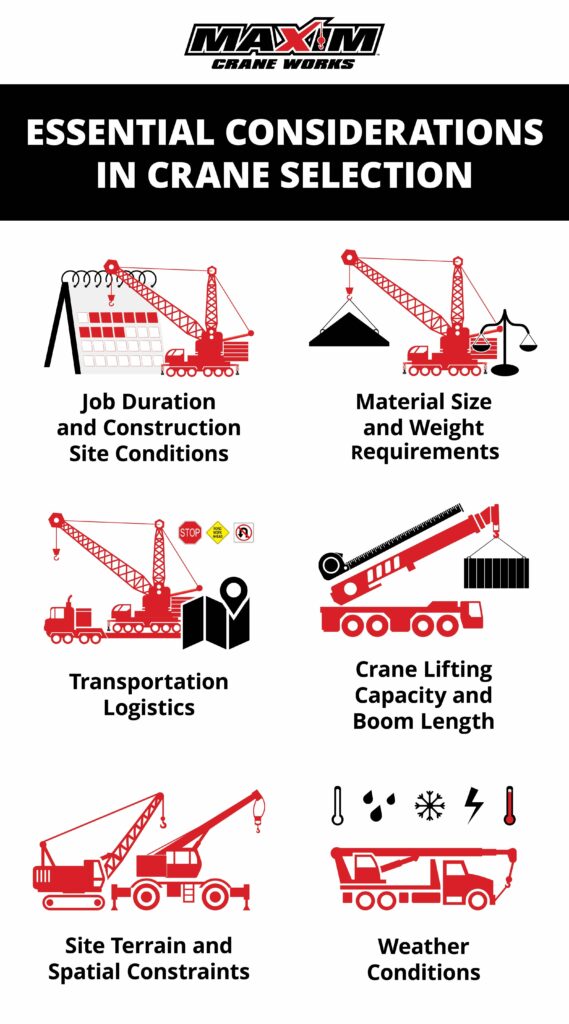
Crane selection is a pivotal decision in construction projects, directly affecting project timelines, budget, and scheduling. The right crane can greatly enhance efficiency, while an inappropriate choice can lead to increased costs and delays. When choosing a crane, several key factors must be considered to select a crane that meets the project’s specific needs and contributes to a successful and timely completion.
Job Duration and Construction Site Conditions
Job duration and specific construction site conditions are significant factors in selecting the appropriate crane. Short-term projects may benefit from quick setup and dismantling capabilities, while long-term construction could leverage the sustained presence and higher capacity of cranes like tower or crawler cranes.
Additionally, site terrain and spatial constraints should influence the type of crane chosen. Cranes with tracks, like crawler cranes, are designed for soft or uneven terrains, while compact mini-cranes can navigate tight spaces where larger cranes cannot.
Material Size and Weight Requirements
When considering the size and weight of the materials to be lifted, it’s crucial to align these with the crane’s lifting capacity. Cranes like boom trucks are suitable for light to medium loads, whereas heavier construction materials necessitate the power of a crawler or a tower crane.
Transportation Logistics
Transportation logistics, including regulations and route planning, are pivotal in crane choice. Mobile cranes can be driven to the site, but larger cranes may require special transport arrangements. Understanding the impact of city and state laws, as well as securing the necessary permits and planning for route restrictions, will aid in getting the crane to the job site on time and within budget.
Crane Lifting Capacity and Boom Length
Crane lifting capacity and boom length requirements must be precisely matched to the project’s needs. Load charts are invaluable tools for determining the capabilities of various cranes. They detail the maximum weight each crane can lift at various lengths and configurations, helping to avoid overextending the crane’s operational limits.
Maximizing Efficiency through Crane Sizing and Load Charts
Selecting the right crane for a construction project is crucial for maximizing project efficiency. Understanding the capacity and capabilities of a crane is essential in this process. Crane sizing and load charts serve as invaluable tools for making informed decisions.
Maxim Crane Works offers free assistance in crane sizing to help clients select the most suitable equipment for their projects. This service is designed to prevent under or over-utilization of the crane.
Load charts provide detailed information about a crane’s capabilities, including maximum lifting capacities, boom lengths, configurations, and machine dimensions. By analyzing load charts, project managers can determine the specific crane that meets the lifting requirements of their project.
Maxim Crane Works: Your Partner in Crane Selection
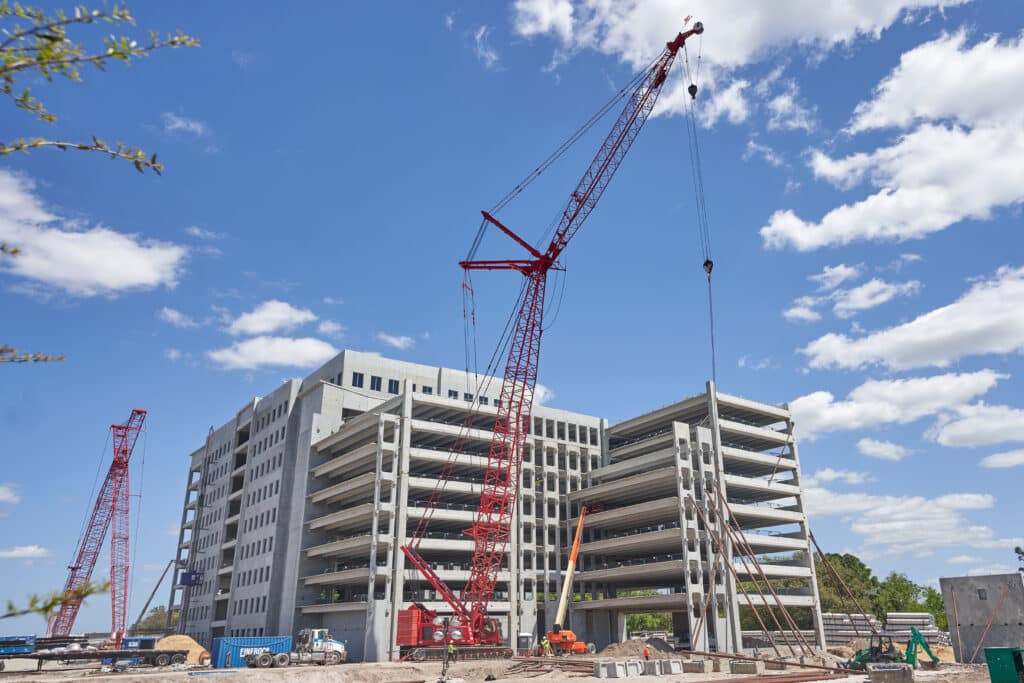
Maxim Crane Works excels in guiding clients through the intricate process of crane selection. Their comprehensive services include onsite job walks, ensuring that every recommendation is not only tailored to the project’s objectives but also cognizant of the unique challenges and requirements of each job site.
With a deep understanding of the complexities involved in crane operations, Maxim Crane’s team extends their knowledge to pinpoint the most suitable crane type, capacity, and configuration for your specific tasks.
Maxim Crane’s nationwide presence allows them to offer rental and lifting services that span coast-to-coast, making them an ideal partner regardless of your project’s location. Their ability to provide a diverse fleet of cranes and the logistical support to match makes them a one-stop solution for all your lifting needs.
When you partner with Maxim Crane, you’re not just renting a crane; you’re accessing a vast reservoir of industry knowledge, robust equipment options, and a commitment to safety and efficiency that can significantly benefit your construction project.
Maximize Project Success with Maxim Crane Works
The choice of crane for a construction project is not merely one more tool in your arsenal – it’s a crucial factor that influences the project timeline, budget and client satisfaction. With this in-depth discussion, we’ve explored the critical factors that influence the choice of a crane and how it can impact your project’s success. From the diverse types of cranes available to key factors that dictate their selection and national solutions provided by Maxim Crane, we’ve offered insights on how project managers can maximize efficiency when it comes to crane decisions.
At Maxim Crane Works, our extensive knowledge stems from decades of experience working with clients across a vast range of industries. We realize the importance of selecting the right crane for every job, which is why our team offers full support services designed specifically to help professionals make sound choices.
Let us help you navigate through the options and find the perfect crane solution tailored to your project’s unique demands.
Embrace the confidence that comes with informed decision-making. Contact Maxim Crane for a consultation and together we can elevate your project to new heights.


